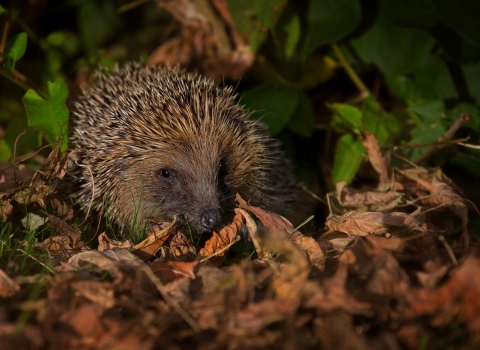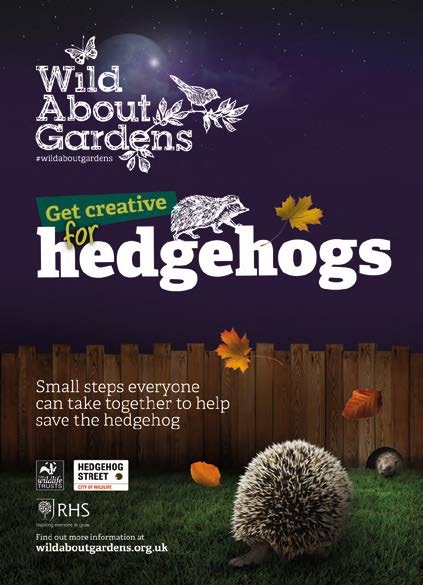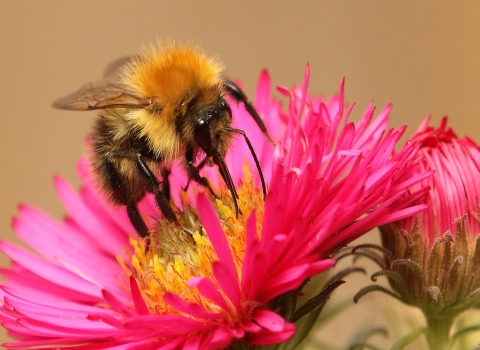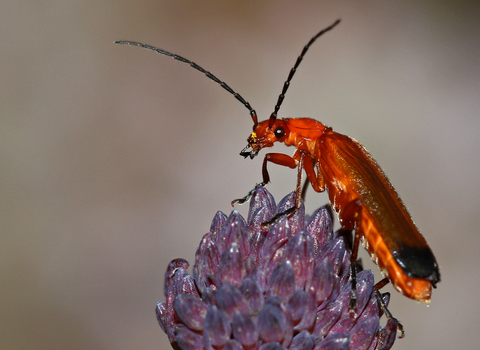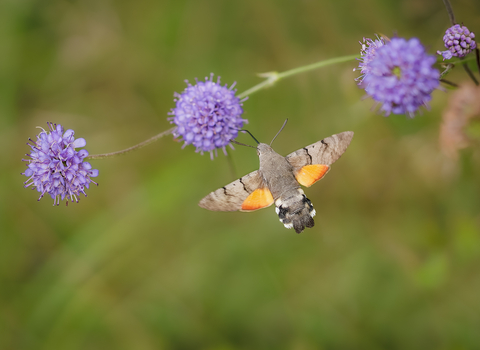It's estimated that there are 95% fewer hedgehogs now than there were in the 1950s and we need your help to find out how Worcestershire's hedgehogs are doing.
Hedgehogs live in gardens, woodland edges, hedgerows, grasslands, parks and cemeteries and can travel between 1-2km every night. If you're lucky enough to see one in your garden, it will be visiting all of your neighbours too.
Hedgehogs are particularly fond of beetles, earthworms and caterpillars as well as slugs and snails so keeping areas of your garden a little wild - perhaps by leaving long grass, creating a log pile or not sweeping away fallen leaves - you'll help your local hedgehog population.
Where are Worcestershire's hedgehogs?
Since 2015, we’ve had more than 900 responses to our request for sightings of hedgehogs in Worcestershire and we’ve been working closely with Worcestershire Biological Records Centre to see how our hedgehogs are doing.
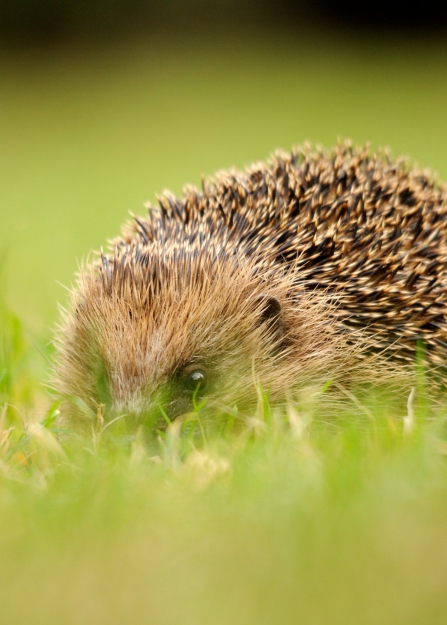
Hedgehog by Amy Lewis
A quick look at the responses shows that whilst hedgehogs are fairly widespread, they’re quite thinly scattered. Those in our most of major towns appear to doing okay but there are fewer sightings in Stourport and Bewdley and in the west of the county (Tenbury, Abberley, Martley and surrounding areas) than there had been previously. Happily, some areas that previously had scarce records of hedgehogs in the east of the county (Harvington, the Lenches, Inkberrow and surrounding areas) now have more dots on our maps.
To see how this fits into national hedgehog populations, take a read of the 2022 State of Hedgehogs report.
We'd love to be able to work out whether our hoggy gaps are genuine holes in hedgehog populations or are simply down to people not sending in their records. Why not record your hoggy sighting below...
Knowing you've got a hedgehog
Hedgehogs aren't seen very often so how will you know if you've got ones visiting your garden? There are some tell-tale signs if you know what to look out for...
Footprints
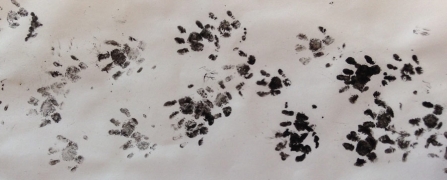
Hedgehog prints by Warwickshire Wildlife Trust
Footprints are easier to see if they visit somewhere that's a bit muddy - especially if it's near where they feed. Or you can make your own mammal footprint trap
Poo
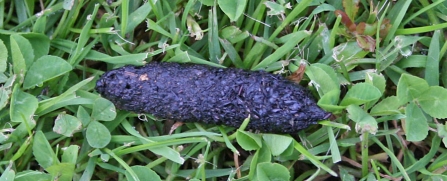
You could also have a look for hedgehog poo! It’s quite distinctive and looks a bit like a dark slug.
Noises
Hoggies can sometimes be noisy eaters and if you have more than one visiting your garden, you're likely to hear lots of snuffles and grunts.
We know that hedgehog numbers are decreasing but if we all do one thing such as cutting a hole in our fence, we can make a difference.
Helping hedgehogs
Hedgehogs need things to eat, safe places to sleep and paths to move along. There are a variety of ways that you can help hedgehogs in your garden as well as keeping them safe from harm.
Check out our tips to help make your garden more wildlife-friendly or download our Wild About Gardens Week booklet full of hedgehog hints. You may wish to check out the British Hedgehog Preservation Society's website for more information on how you can help our spiky friends. If you've seen a hedgehog recently, why not let us know by filling in the form below - it'll give us a much better idea of how hedgehogs are doing in Worcestershire.
Let’s not let the last hedgehog in Worcestershire disappear.
Helping hoggies in the garden
- grow plants that will attract the food they like
- leave wilder places in your garden such as log piles or longer grass
- leave a leaf pile for lots of lovely creepy crawlies to hide in
- create a hedgehog highway by cutting a hole in your fence (& get your neighbours to do the same)
- build a hedgehog home
- leave places for hedgehogs to hibernate
- leave water out for hedgehogs, especially in the hot weather
Read more in our blog post about hedgehogs.
Keeping hoggies safe
- check any bonfire before you light it as they are a perfect place for a hoggies to sleep or hibernate
- check your longer grass before strimming as this now accounts for a lot of hedgehog injuries
Found an injured hoggie?
Hedgehogs are nocturnal so if you find one that's out in the daytime, it's probably got problems. Please contact your nearest rescue centre:
Vale Wildlife Hospital, Beckford
British Hedgehog Preservation Society

